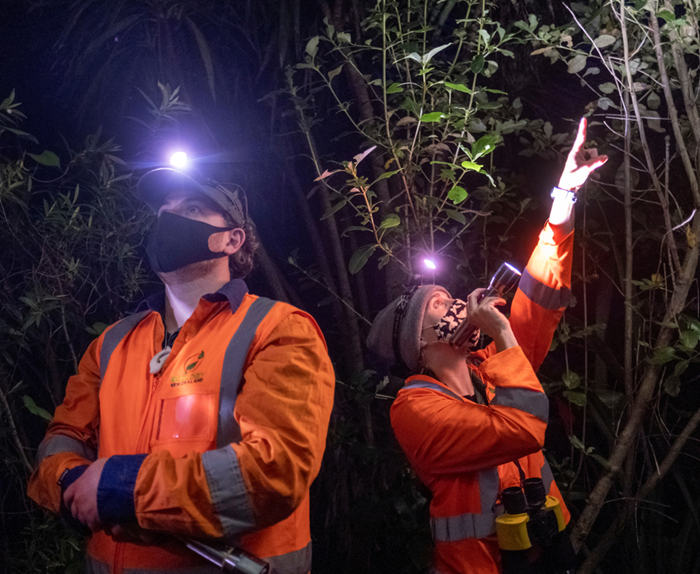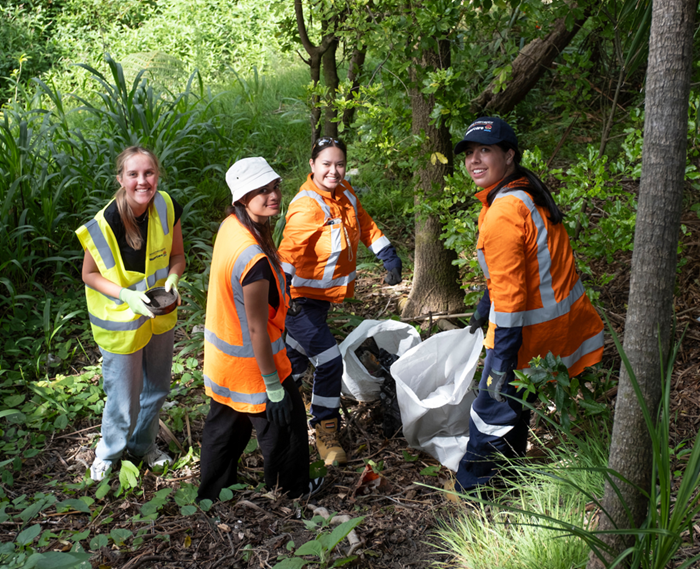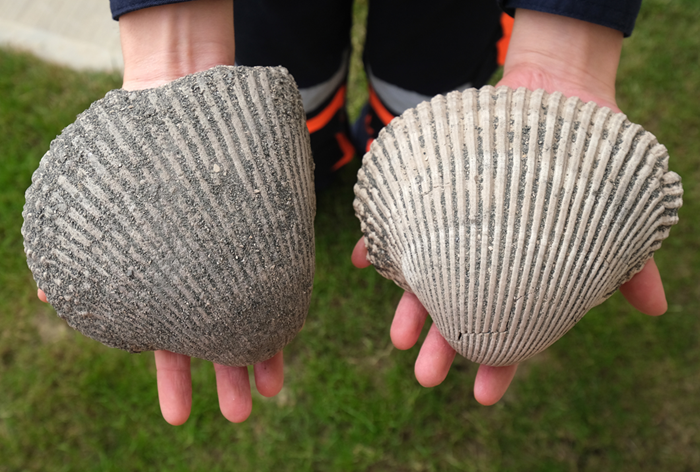Looking out for little critters
Skinks are protected animals so we relocate them whenever our environmental teams find them during set up at our construction sites. We catch them, keep them safe, and whenever we can invite children from nearby schools to join us when we release them into a new habitat.

Photo: We go to great lengths to find and relocate precious critters before construction begins
Helping restore our waterways and open spaces
The Lyon Avenue site, which opened in early 2022, is partly located within the Roy Clements Treeway on Mt Albert Grammar School grounds. Our project staff and their families have regularly engaged with the school on environmental projects including two busy planting days.
We’ve also worked alongside the school’s Enviro Club to collect seedlings for growing within the construction site. A lot of vegetation was cleared for the work site, so this was an opportunity for students to salvage some self-seeded plants and re-pot them. While the team did the mahi, they heard from Roy Clements about the early days of the Treeway. The team's efforts have been supported by members of St Luke’s Environmental Protection Society (STEPS), which undertakes restoration projects in the Treeway and lava forests along Meola Creek.
Elsewhere, our project team is helping clean up Whau Creek in Blockhouse Bay which flows alongside four of our sites on the Link Sewer B route. We held a working party to help clean up the banks of the creek (see photo).

Photo: Project staff busy with the Miranda Reserve clean-up.
Fossil shells give a look into our ancient past
Watercare has entered into a partnership with Auckland Museum and Mana Whenua to collect and house taonga discovered during the project. Following the discovery of 3.5-million-year-old fossils in the excavated Kaawa sand at our Māngere site, Auckland Museum was interested in further inspecting the sand stockpiled near our site.

Photo: Two magnificent 3.5m year old finds from our Mangere site
The museum is now developing a programme to educate the public about the taonga, both from scientific and cultural points of view. The museum has provided two paleontologists to sift through the stockpile of shell and sand. We’ve made their task easier by splitting the stockpile, providing a loader and a sorting screen normally used in an aggregate quarry.
The museum has now collected more than 100 specimens of shell - from small cockle shells to larger oyster and mollusc shells. Some of these shells had not been seen before in any excavations of Auckland. We’ve also found a whale vertebra, along with various sized logs and wood fragments which are thought to be kauri.
This is another example of the journey we are on at the Central Interceptor project by helping expand our understanding of our city’s heritage.